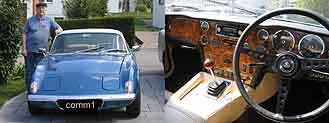
Simviation Forums
Flight Simulator and other chat



 ...!
...!

 "In theory, there is no difference between theory and practice. But, in practice, there is."
"In theory, there is no difference between theory and practice. But, in practice, there is."



 "In theory, there is no difference between theory and practice. But, in practice, there is."
"In theory, there is no difference between theory and practice. But, in practice, there is."

theory 1. if when you turn left the, left "rudervator" goes up and the right one down the plane in theory would bank left. But then when the plane is banked over the right flap is then vertical (like a rudder) but it is faceing the wrong way and would try to make the plane turn right even when its banked left.
theory 2. if when you turn left the left "rudervator" goes down this would act like an elavator and would turn that side of the plane down and the other "rudervater" would turn its side of the plane up so the plane would bank over.












Users browsing this forum: No registered users and 396 guests